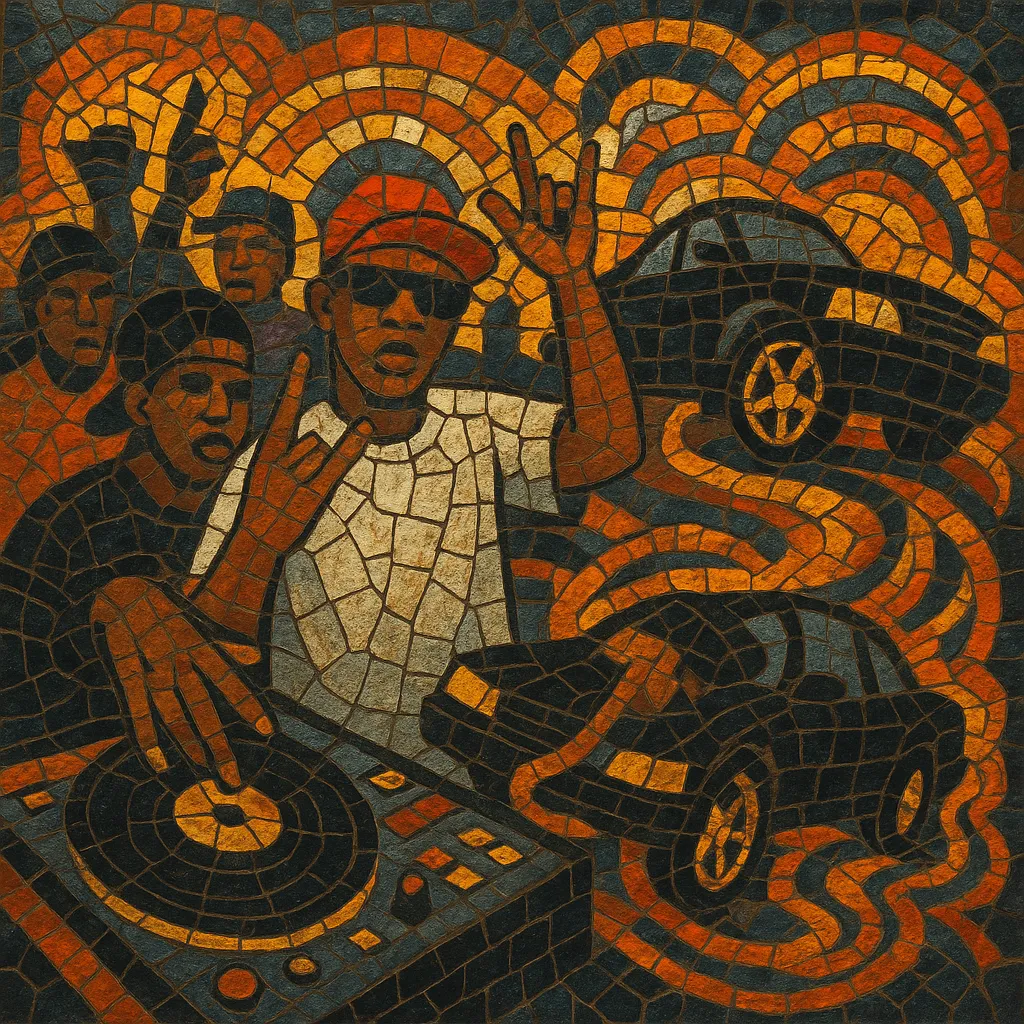Hyphy is a high-energy subgenre of Bay Area hip hop that pairs booming 808s, sharp handclaps, and rubbery, minimal synth riffs with chant-driven hooks designed for the dancefloor and the car stereo.
It emphasizes a rowdy, party-forward aesthetic—often with call-and-response vocals, group ad‑libs, and local slang—while keeping the musical backbone simple, bouncy, and relentlessly propulsive.
Culturally, hyphy is inseparable from Northern California street culture of the late 1990s and 2000s: turf dancing, sideshows, and anthems celebrating Bay pride. Artists like Mac Dre, E‑40, and Keak da Sneak helped codify the sound and spirit, turning a regional movement into a national flashpoint in the mid‑2000s.
Hyphy grew out of Northern California’s Bay Area in the late 1990s, drawing on local West Coast hip hop, mobb music’s trunk-rattling minimalism, and the melodic bounce of G-funk. The sound favored hard 808 kicks, crisp claps, and sparse synth motifs—an economical palette that translated well to cars, clubs, and street parties.
In the early to mid‑2000s, the scene coalesced into a full-blown cultural wave. Pioneers like Mac Dre (whose charisma and humor became symbolic), E‑40, and Keak da Sneak (often credited with popularizing the term “hyphy”) delivered a stream of region-defining records. Producers such as Traxamillion and Rick Rock refined the “slap”: a bass-heavy, syncopated beat built for chanting hooks and crowd energy. National attention peaked as songs and dances went viral beyond the Bay, bringing the movement to mainstream media.
Hyphy was as much a lifestyle as a sound, marked by turf dancing, flamboyant car culture, and hyper-local slang (e.g., “go dumb,” “thizz”). While sideshows and “ghost riding” grabbed headlines—and controversy—the music’s core remained communal release, humor, and kinetic movement.
By the late 2000s the commercial wave cooled, but hyphy’s DNA lived on. Its minimalist bounce and chant-ready hooks fed into later West Coast sounds (including LA ratchet) and influenced internet-age aesthetics through artists connected to the Bay (e.g., The Pack leading into Lil B’s cloud-rap era). Today, hyphy stands as a perennial Bay Area touchstone whose rhythmic and cultural signatures continue to surface in regional and national hip hop.
Aim for a bouncy, forward-moving feel around 95–110 BPM. Keep swing subtle; the groove should feel urgent and a bit rowdy rather than laid-back.
Use hard 808 kicks and tight claps/snaps on 2 and 4. Layer syncopated hi-hats and occasional triplet bursts for momentum. Bass should be simple, sub-heavy, and repetitive—leave space for chants and call‑and‑response.
Favor minimal, catchy motifs: short square/saw leads, synth brass stabs, and sine or triangle bells. Ear-candy like sirens, whistles, and DJ drops can heighten hype moments, but avoid clutter—hyphy thrives on negative space.
Write chantable hooks with repetitive phrases suited to crowd participation. Verses lean on charismatic delivery, Bay slang, humor, and party bravado. Group ad-libs (“ayy!” “yee!”) and call‑and‑response lift the energy.
Keep structures straightforward: 4–8 bar intro, 16 bar verses, 8 bar hooks, and strategic beat dropouts for crowd interaction. Use short breakdowns and sudden mutes to set up big hook returns.
Prioritize impact over polish: punchy mid-bass (80–120 Hz), present claps, and clear vocal leads. Avoid over-compression that kills bounce; the kick and bass should move air while leaving room for chants.


